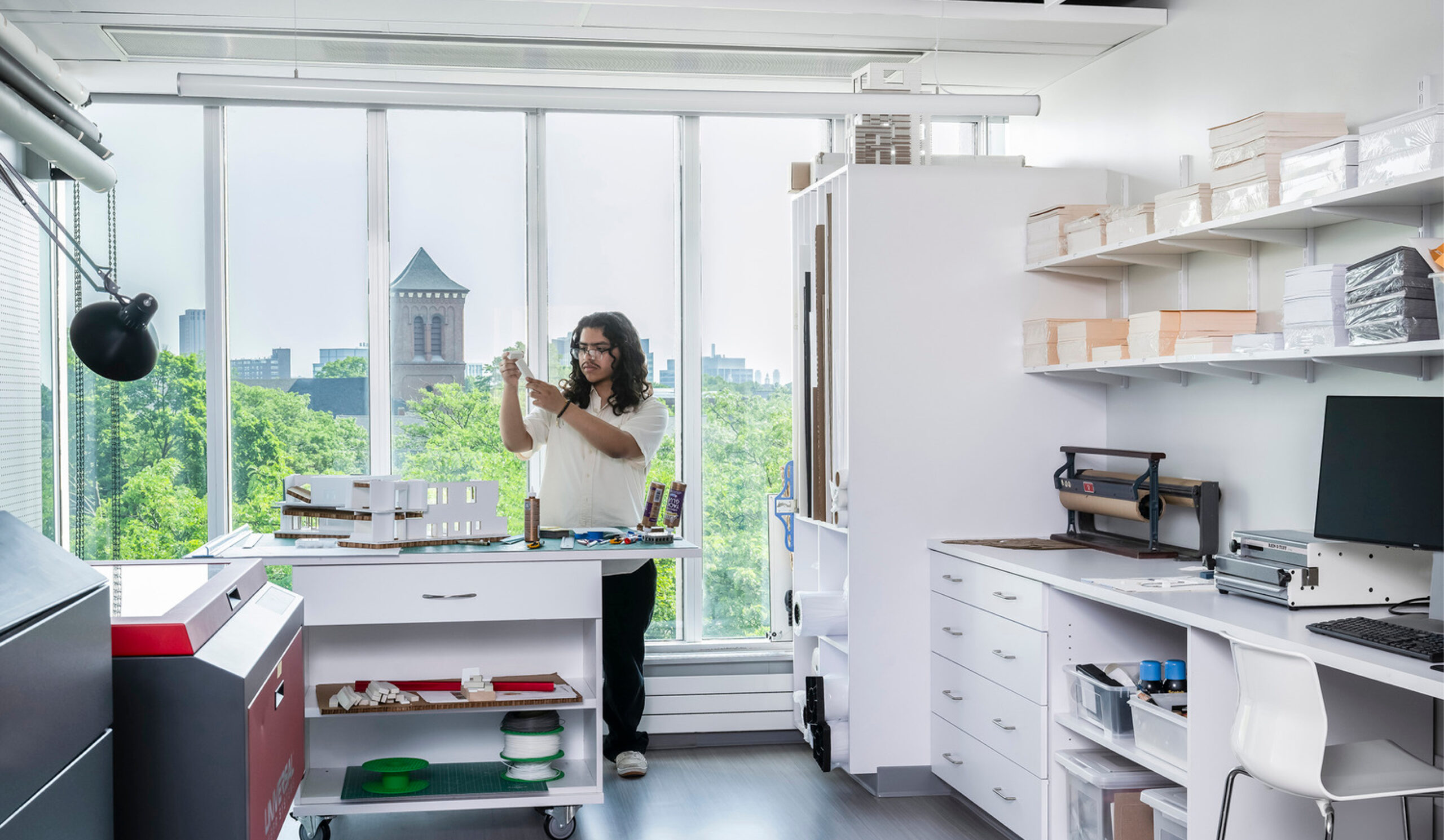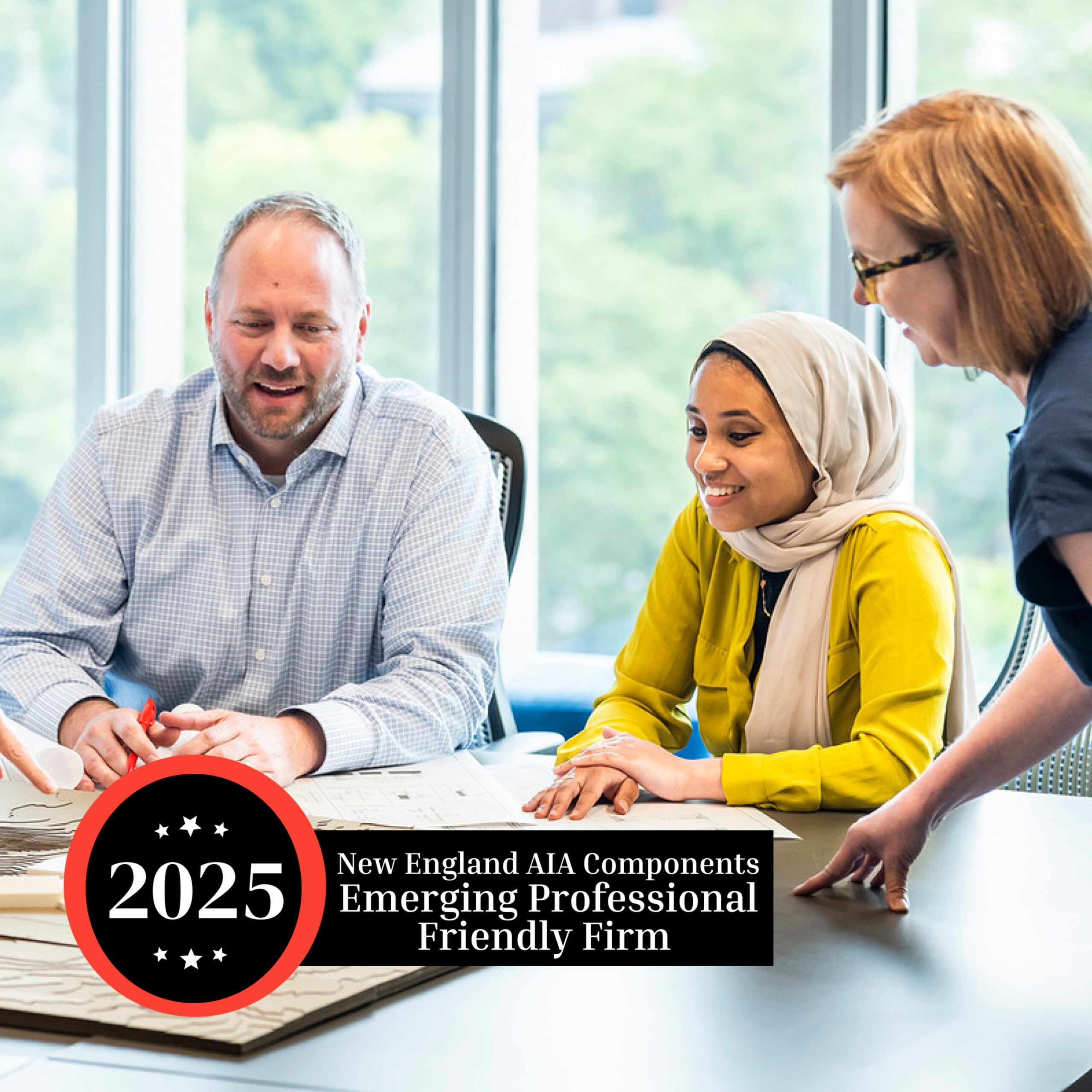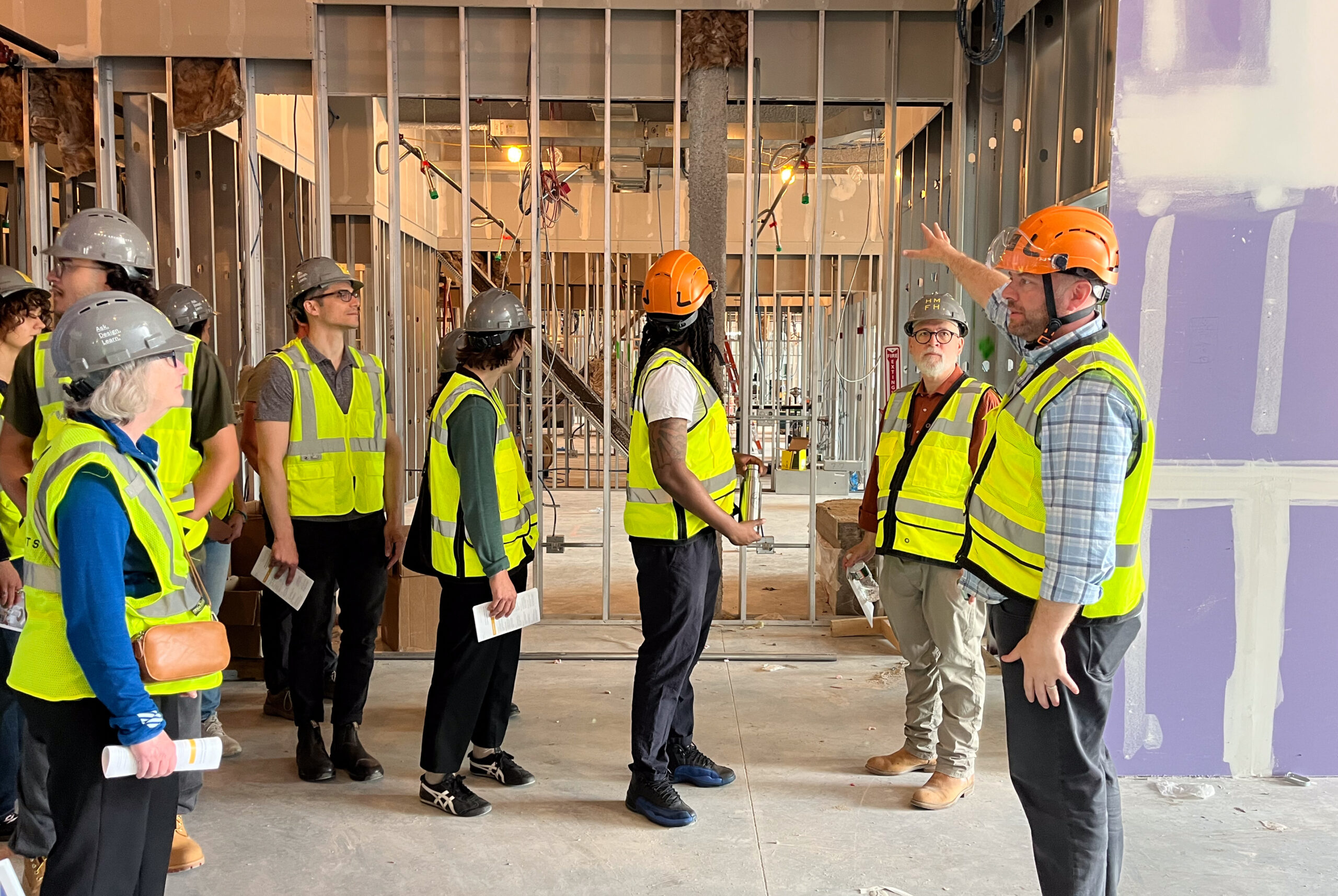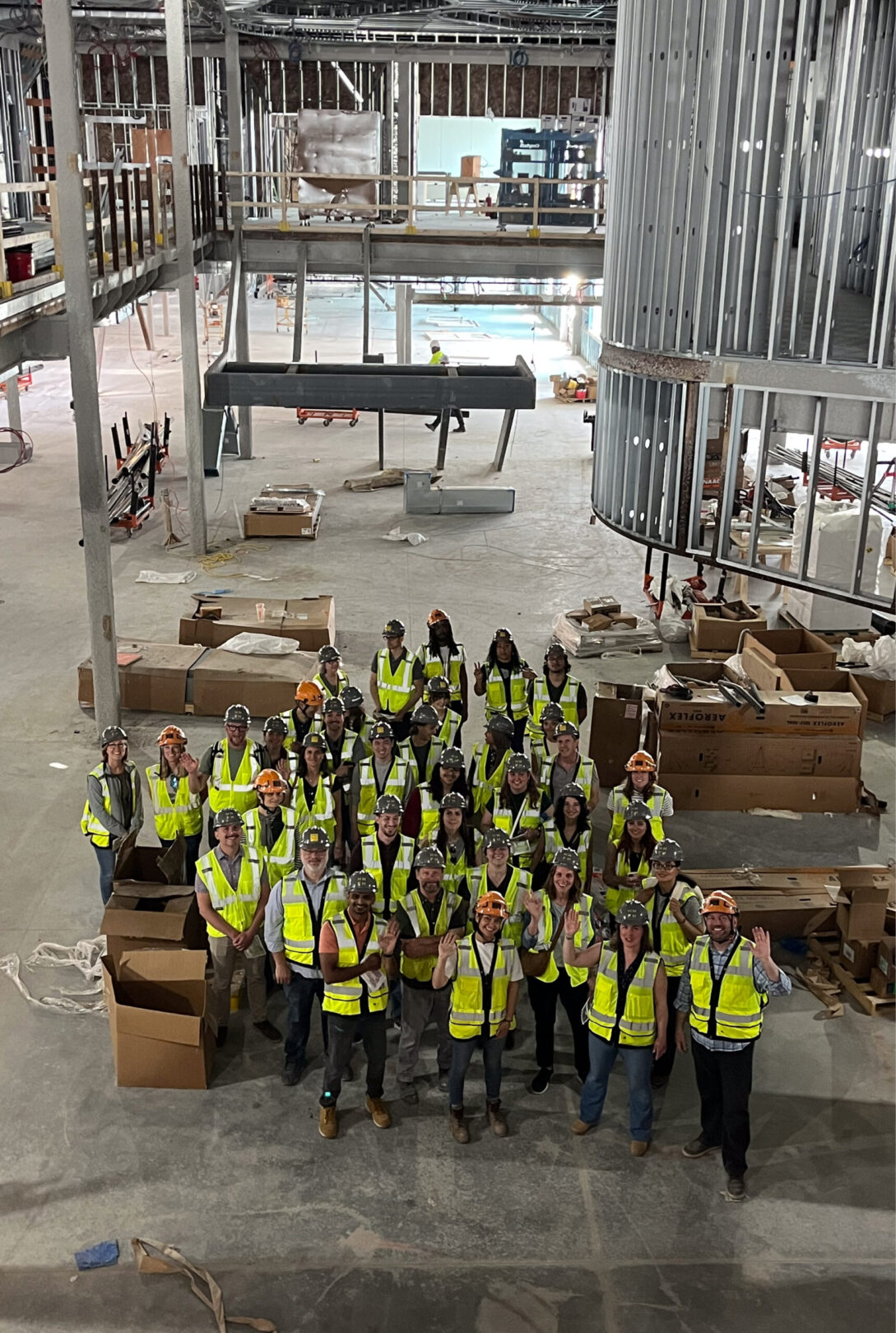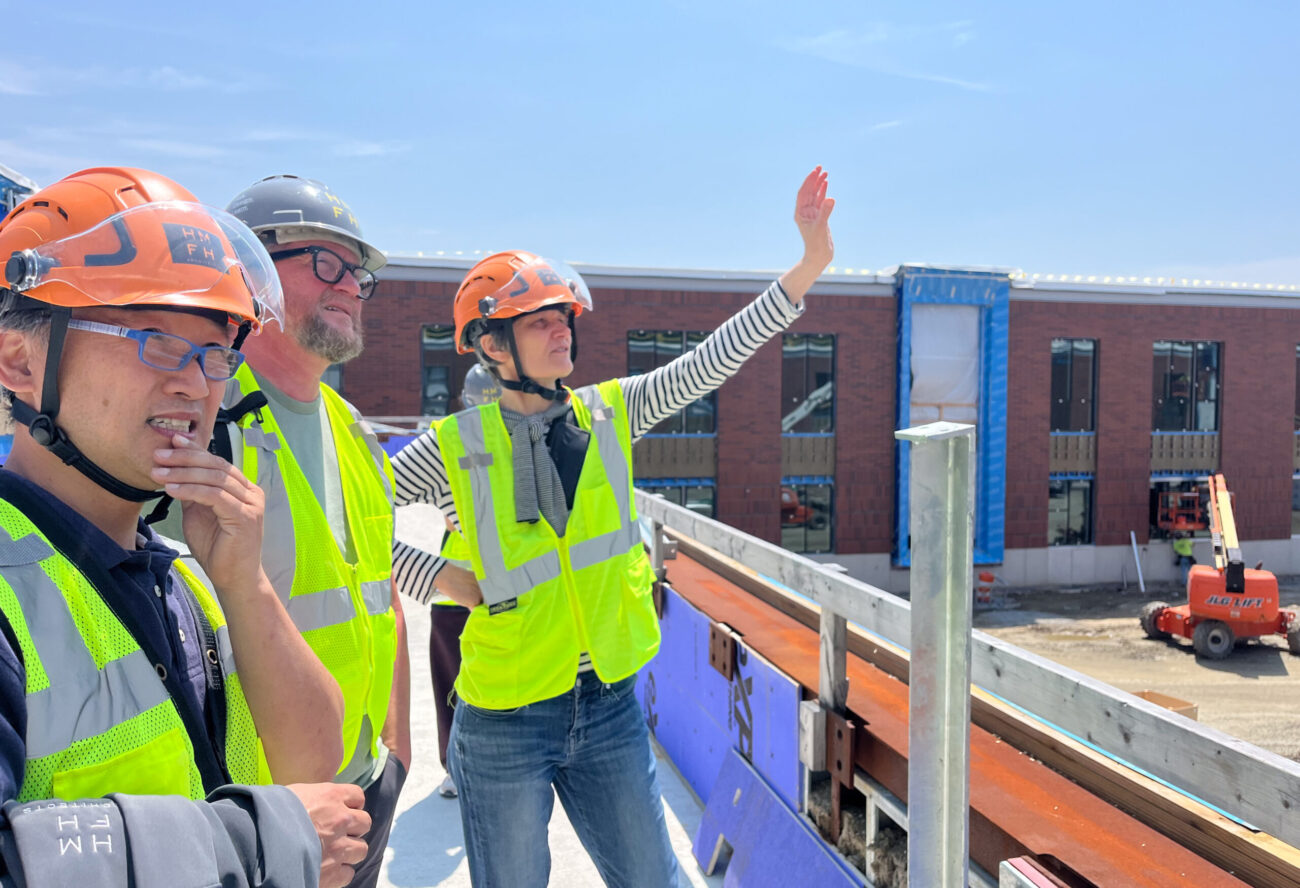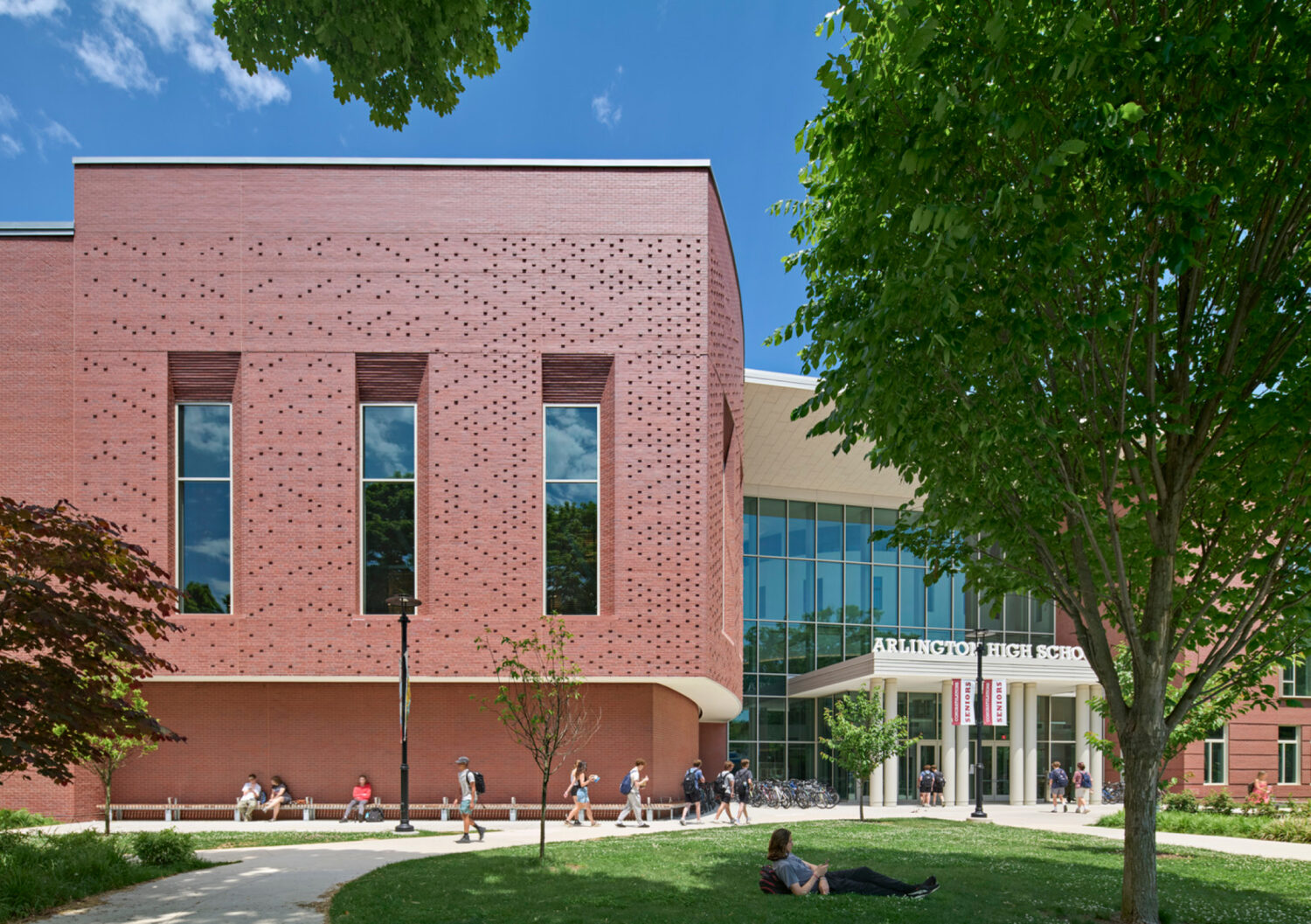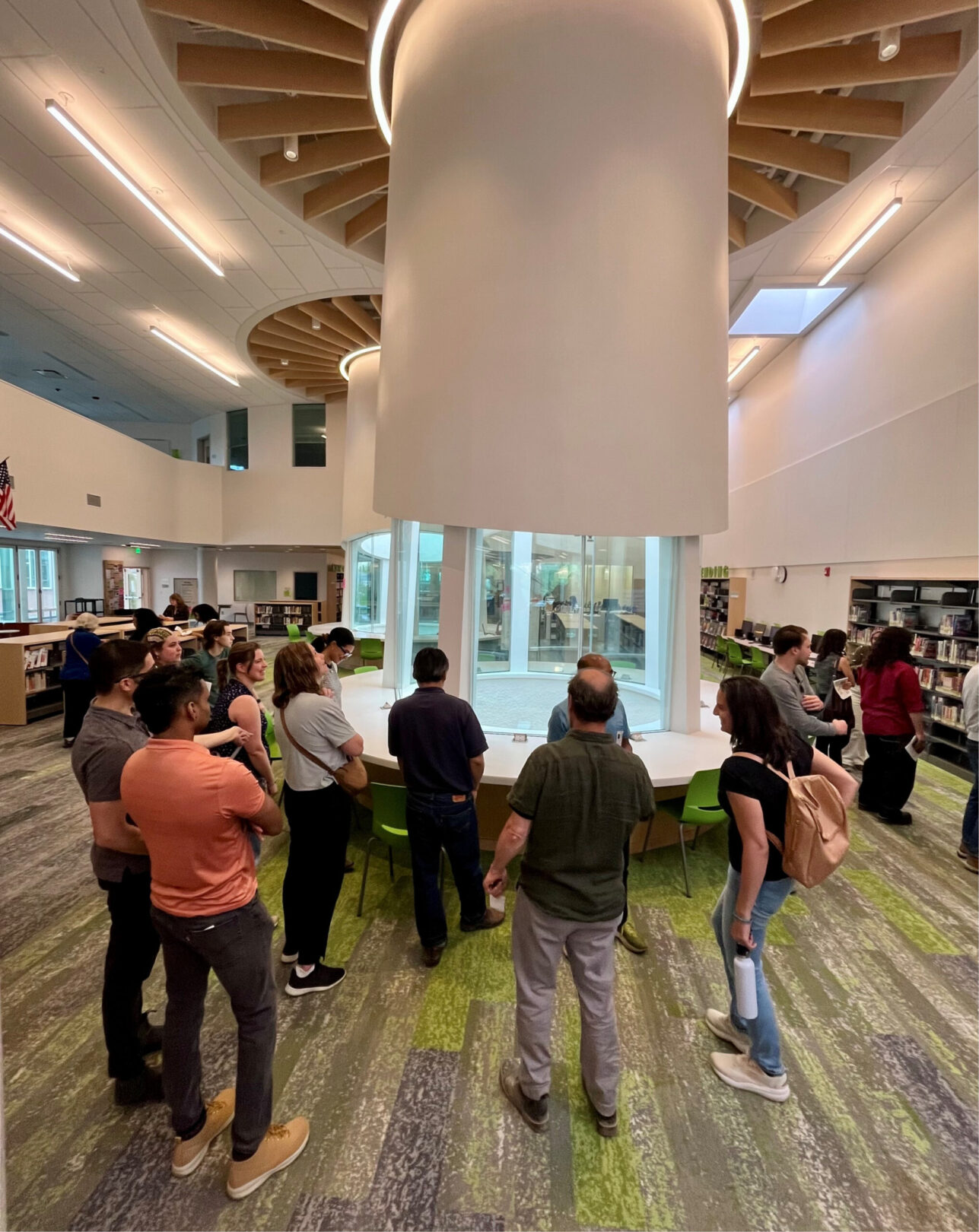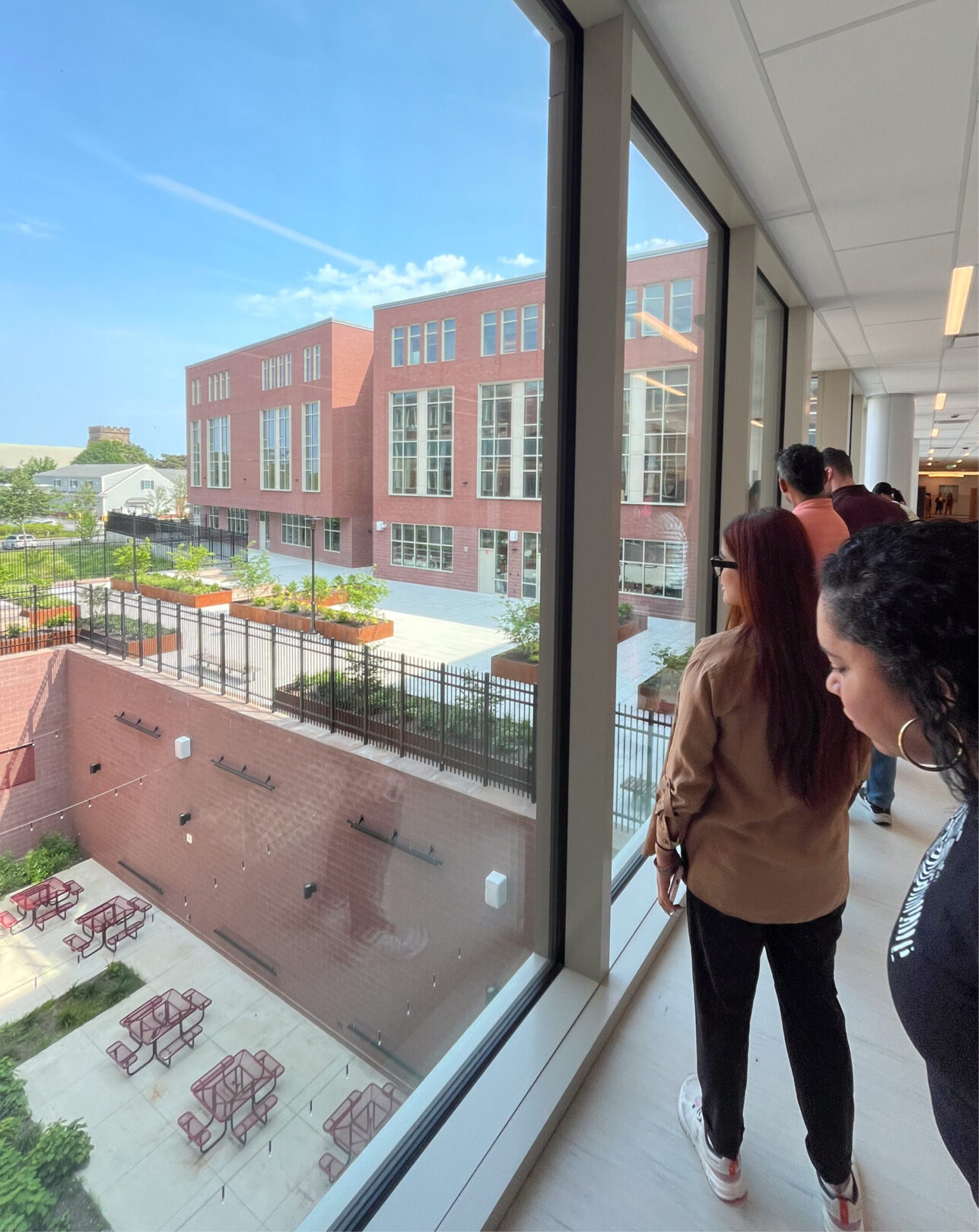HMFH Named to AIA New England’s List of Emerging Professional Friendly Firms for 2025

HMFH’s designation as an AIA New England Emerging Professional Friendly Firm is a testament to our continued support of young designers as they develop in their careers through internal initiatives and an inclusive work environment that promotes mentorship and open communication.
Taking cues from our work as educational designers, HMFH has built a culture of learning and collaboration in which feedback and creative exploration are actively encouraged at all levels. The result? Strong continuity of staff and young professionals who feel empowered to share their design ideas and take risks as they grow as architects and designers.
HMFH applies a three-pronged approach to ensure that emerging professionals have the necessary resources to thrive at HMFH and beyond. We actively support young designers on their path to licensure and pursuing other relevant registrations, encourage involvement in both internal committees and professional organizations outside of the firm, and provide consistent mentorship opportunities.

“Even as a young designer with much more experience ahead of me to come, I have always felt supported to take the next step in my design career and pursue my specific passions, from exploring technology advancements in VR, to fighting for equity in the profession by helping to develop internship programs and working toward a JUST Label for the firm.”
Soha Mohammed-Eltaher | Designer, HMFH Architects
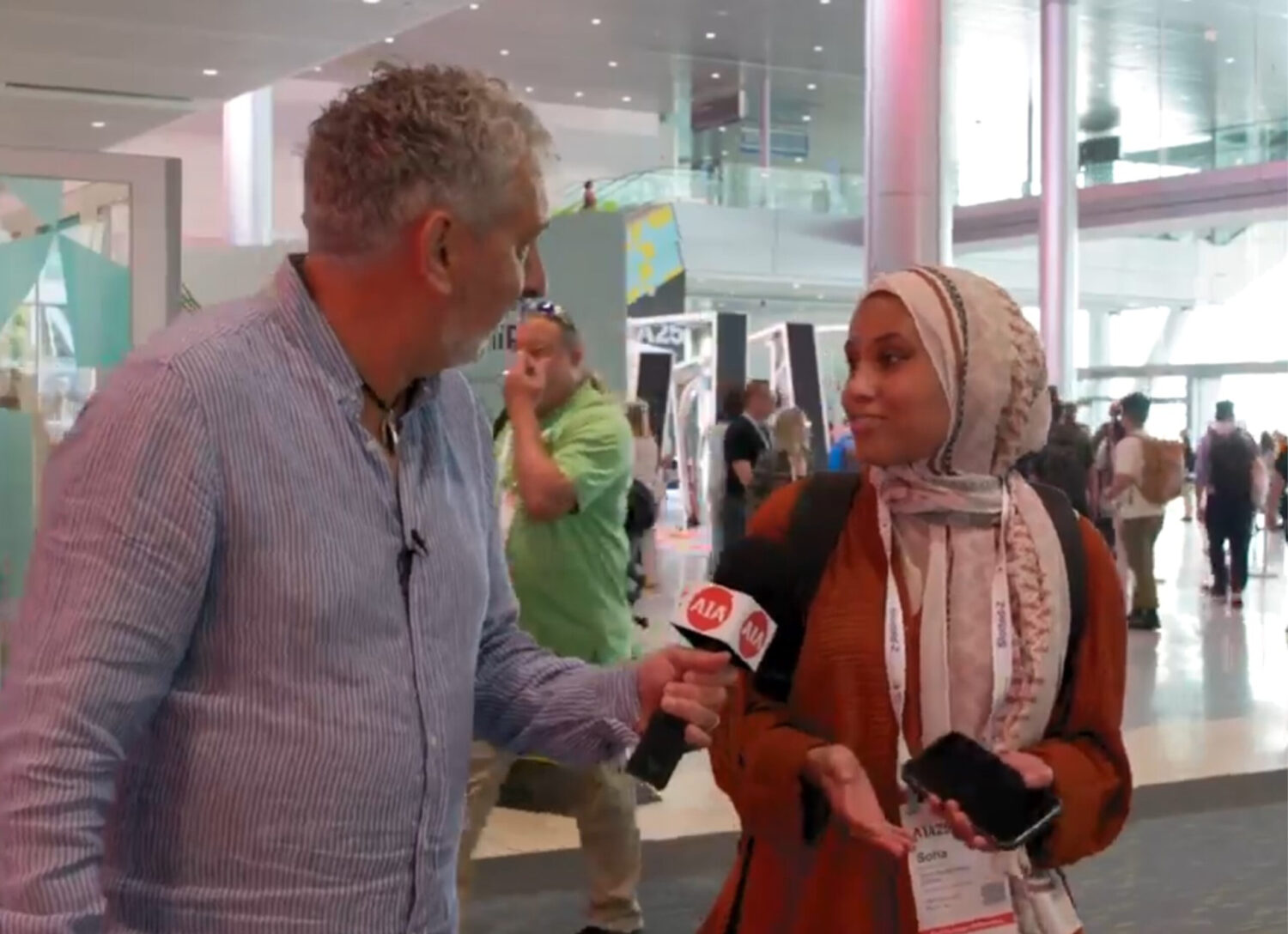

Path to Licensure
- Access to ARE training materials including Amber Books
- Regular in-office study groups
- AXP supervisors and mentors
- Emerging professionals are encouraged to pursue other certifications including LEED, PHIUS, and WELL
Involvement
- Emerging professionals are deeply involved in internal committees including the Racial Equity and Diversity (RED) Committee, Sustainability Committee, and Design & Visualization Committee (DVC)
- Emerging professionals are actively involved in organizations throughout the design community including the BSA Green Roof and Infrastructure Team (GRIT), the National Organization of Minority Architects (NOMA), and the BE+ Emerging Professionals Group
- Professional development allowance to encourage attendance of conferences and relevant events, most recently the AIA Conference on Architecture & Design
Mentorship
- Emerging professionals are actively involved in the design process from feasibility through closeout, at projects of all scales
- Annual comprehensive reviews
- Real-time feedback training to encourage a culture of open communication
- Specific roles on project teams such as our newly implemented Sustainability Advocate role encourage emerging professionals to take on additional responsibility and work closely with the firm Sustainability Leaders
- Open and inviting firm atmosphere in which leadership is involved and accessible in the daily office operations
